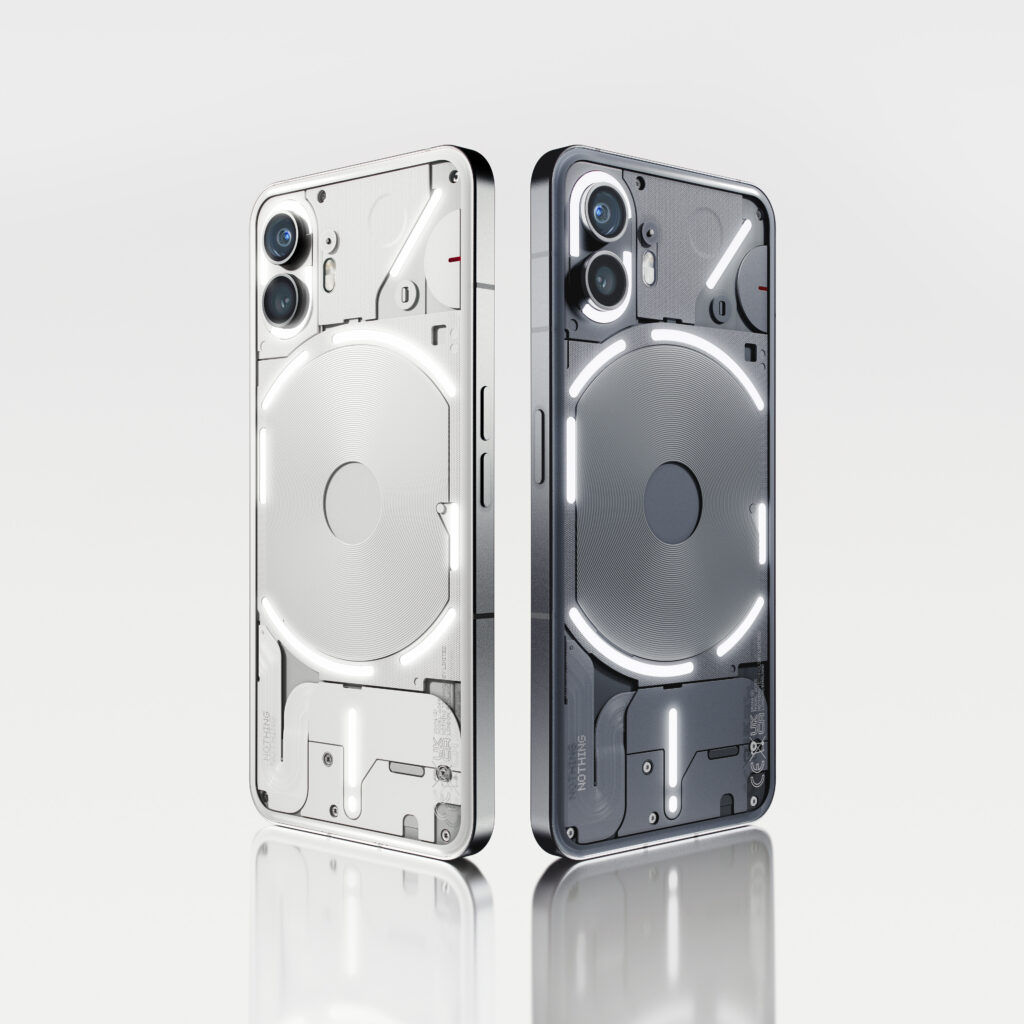From Nothing To Something
The Nothing Phone (2) is a premium, special phone — without the flagship price.

If you bought a new, top-of-the-line, flagship smartphone, you likely overspent. You probably did not need it.
How often do you take complex night shots that require the best smartphone cameras? Or take a 100x zoom telephoto shot? Or competitively played mobile games? The Samsung S23 Ultra is a fantastic phone, but — unless you work in design or construction and thus use the in-built S-pen stylus all the time — it’s not worth the $1,100 to $1,600 you spent on it. The iPhone 14 Pro Max is a great phone, but are you really getting $200 more value than the $899 14 Plus, with a similar screen size, camera, and features?
The answer is no, but phone companies save the best design and features for their top-of-the-range products. Mid-range phones feel generic; flagships feel special. The 14 Plus comes in bright glossy colors, but the 14 Pro has matte purple and black, light gold, or classy silver. The Samsung S23 is a value product; the Ultra is, as its name suggests, the ultimate. Going for the cheaper model feels a little like buying supermarket label ketchup instead of Heinz.
And that’s where Nothing’s Phone (2) truly stands out. It feels premium and special in a way few top-of-the-range flagship phones do. Yet it only starts at $599.
Produced by the 2-year-old London-based tech start-up, it’s an upper mid-range smartphone with upper mid-range specs and unremarkable cameras. Its Snapdragon 8+ Gen 1 chip is powerful and power efficient, but it’s last year’s flagship chip, so not the most up-to-date. The 4700 mAh battery is solid, though expected of this range, and the 6.7-inch LTPO OLED display is bright, colorful, and has a smooth, variable 120hz refresh rate, but the resolution is only 1080p.
On paper, that’s somewhat expected and uneventful. However, in trying out the phone daily — as I have been with a Nothing pre-release review sample — I find that I’m missing little from my flagship phone. In my case, that is the Oppo Find X3 Pro — a top-of-the-range Chinese Android smartphone, never sold in America, which competed with the iPhone 12 Pro Max and Samsung Galaxy S21 Ultra.
The Nothing phone’s battery has lasted me a full day of moderate use, which is as much as you need, and the interface is as fast and fluid as the most expensive options on the market. With a 25-year-old’s 20/20 vision, I sometimes notice light pixel fringing on text or particular wallpapers, but otherwise, the screen is gorgeous; bright and colorful for direct sunlight, but it can dim far down for comfortable night-time reading.
Similarly, if you’re the average phone user — using its cameras to take photos of your children or pets and holiday moments — the Phone (2)’s 50-megapixel main and ultrawide cameras are more than enough. The photos are clean, crisp, and neutral, in anything but particularly harsh or dark lightning, and the front-facing 32-megapixel punch-hole camera goes toe-to-toe with the best, giving a clean detailed look in video calls and vain selfies.
If you do care about photography, I still would hesitate from thinking a flagship phone will do the trick. For similar money, you could buy a Nothing phone and a used, compact camera — for example, an older model in the Fuji X line or Sony RX100, which still takes vastly superior photos when compared to a top-of-the-line-smartphone.
The only features I miss from my daily Oppo Find X3 Pro — which cost $1,400 new in 2021 — is greater water resistance — this only has IP54 splash and dust resistance — and rapid charging.
The 45W wired charging speeds on the Phone (2) surpass the top iPhones and match the S23 Ultra, but the Find X3 Pro charges from dead to 40 percent in under ten minutes and 100 percent in 35 minutes. Once you get used to that, it is hard to return to slower charging.
Otherwise, this feels just as premium as the top options and all of that comes down to the design and software. The back of the phone is slightly curved, the aluminum rails are flat and comfortable in the palm, and the bezels are slim and uniform. It’s also quite light for a phone of its size and comes in either white or a mid-gray — though I expect a black option to release in six months.

Nothing runs a skinned version of Android called Nothing OS 2.0, which enhances the classic Android experience with stylish widgets and icons — inspired by dot matrices — and new, productivity-focused features. Most custom Android skins are cluttered, unpleasant, and boring. Yet Nothing OS 2.0 is elegant and highly functional, and its standard wallpapers are beautiful. This is the only Android phone I’ve ever used without quickly switching to the minimalist Niagara Launcher.
You can enable monochromic app icons to reduce the allure of scrolling — you would be surprised by how effective this is — and can add custom icon covers to home screen app folders, preventing distraction. Nothing makes their own interactive setting and time widgets, and you can place these on your home screen as well as the always-on-display. On my device, I can check the weather, three time zones, and enable reverse-wireless charging and my torch, all without turning on the screen.
The most novel features, however, come from the “Glyph Interface” on the phone’s transparent back. Set the phone face down on a desk, and you’re presented with a set of white LED light strips, which can be used as a torch, a fill-light for photography, to display custom ringtones, and to show you the progress of an Uber.
This sounds like a gimmick, but being able to set a silent timer and watch it tick down on an arcing light, whilst still receiving essential notifications on the top right light strip — for example, a work email — are genuinely useful. Apple’s “Dynamic Island” offers similar features but encourages you to use your iPhone more as it sits at the top of your screen. By contrast, the Glyph Interface is extremely effective at reducing distraction. It becomes second nature to flip over the phone to enable the timer.
This phone is not for everyone. For one, if you rely on iMessage, no Android phone will convince you to switch. Even if you are open to the jump, the productivity-focused features here may not appeal to you, and a Google Pixel will offer a better camera for the same money. Finally, the Phone (2) is Nothing’s first phone to be released in America, so it’s certified to work with T-Mobile and AT&T, but not Verizon — at least, not for now.
Yet, if those are not hurdles for you, this is the rare phone that feels special and premium without demanding flagship prices.

